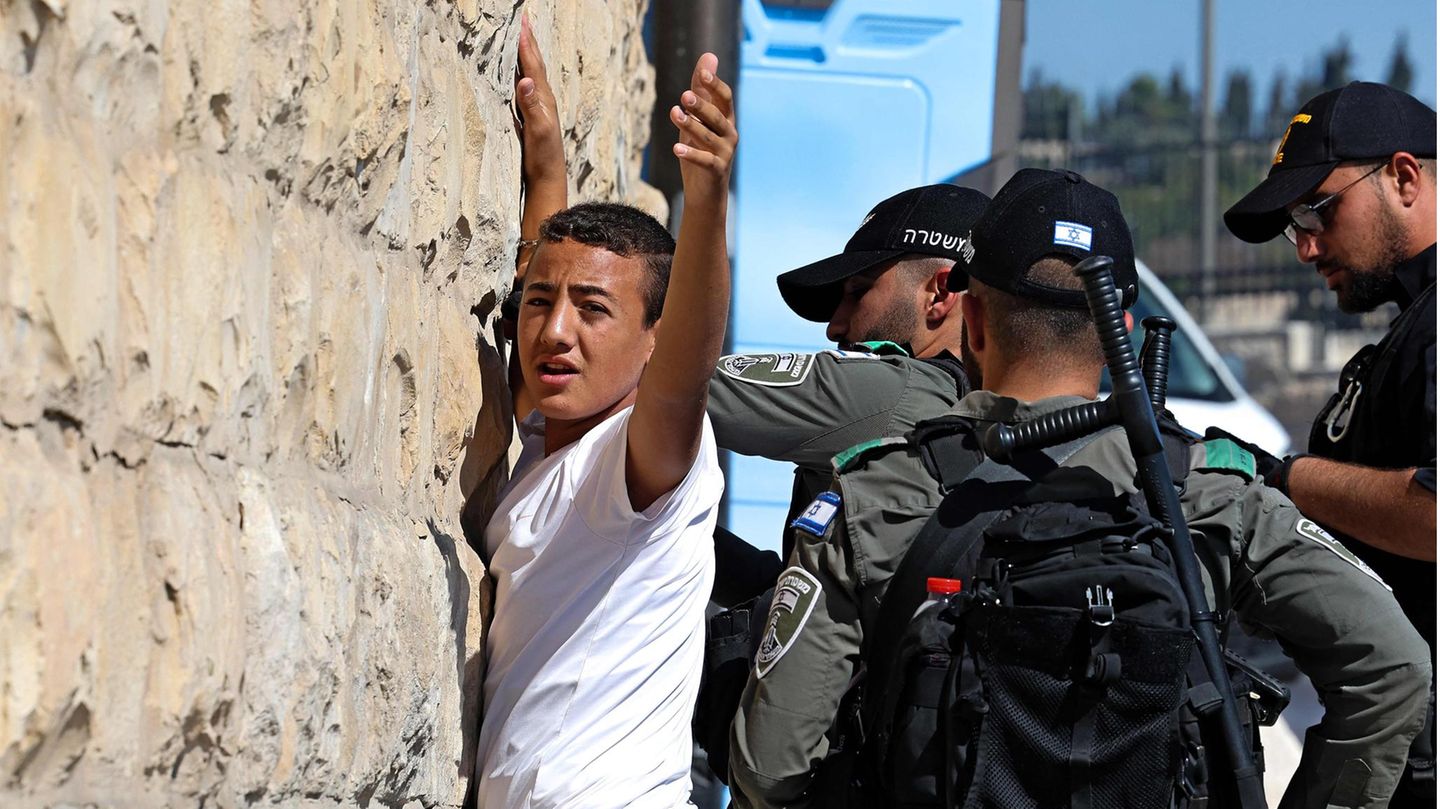On site
In Jerusalem, the security authorities are currently preparing for a further escalation. Today was the first Muslim Friday prayers since the Hamas attacks on Israel. Our reporters were there.
Israeli police officers are already chasing young Arabs through the streets on the way to the Damascus Gate. They disperse, gather again, approach the security forces, run away again. A game of cat and mouse. The police want to prevent the boys from approaching the old town. It is the first Friday after the devastating attacks by Hamas, and the tension is noticeably high before the Muslim Friday prayers in the Israeli capital Jerusalem.
On the one hand, because in the past there have been repeated riots around the al-Aqsa Mosque on the Temple Mount when conflicts between Israel and the Palestinians escalated elsewhere. But also because Hamas had announced a “general mobilization” for this Friday. It was supposed to be a “day of rage,” with attacks on police and settlers in the West Bank and protests in East Jerusalem.
Access to the Al-Aqsa Mosque has been restricted
There are small groups of heavily armed police officers on almost every corner in the city. They have surrounded three young Palestinians at an intersection, standing with their hands on the wall and their legs spread wide apart. They are searched and then allowed to leave.
Jerusalem is one of the central issues in the Middle East conflict. Israel claims Jerusalem as its “eternal and indivisible capital.” The Palestinians, for their part, maintain their claim to East Jerusalem as the capital of an independent state. Since the terrorist organization Hamas launched the attacks last Saturday, killing more than 1,200 people and kidnapping over 150 people, Jerusalem, around 70 kilometers from the Gaza Strip, has also been on heightened alert again.
Within sight of the Damascus Gate, which leads directly into the Muslim quarter of the Old City, a young Arab, 25, is grilling small kebab skewers on charcoal. Actually, he says, he wanted to go to the Al-Aqsa Mosque for Friday prayers. But he wasn’t allowed. Israeli security forces have restricted access due to the current threat, only allowing older people to pass.
The Temple Mount in the Old City with the Dome of the Rock and the al-Aqsa Mosque is of particular importance for Jews and Muslims alike. It is the third holiest site in Islam. At the same time, there used to be two Jewish temples there, the last of which was destroyed by the Romans in the year 70. The Wailing Wall is a remnant of that destroyed Temple and the holiest site of the Jews.
The man at the kebab stand says the situation in East Jerusalem has become extremely tense since the Hamas attacks. He rejects violence. “Israel and Palestine are one,” he says, salam, peace.
A few meters away, a few men have rolled out prayer mats between food stalls and closed shops. They kneel down, murmur and pray “Allahu Akbar”. As if they wanted to show: We are still here. The police are never far away. An Orthodox Jew approaches, he shouts, the police quickly intervene. Just no provocation. In the current situation, it doesn’t take much for an argument to turn into a conflagration.
The police arrest an Arab man at the Damascus Gate, but it is unclear why. She takes him away in a van with a large Israel flag flying on the roof of the vehicle.
Just a day earlier there was an attack on a nearby police station, a terrorist shot and injured two Israeli police officers and the attacker was killed. There was also violence in the West Bank. In the south of Nablus, radical Jewish settlers shot and killed a 62-year-old man and his 25-year-old son.
However, there is no sign of the “Day of Rage” that the Hamas terrorists declared in Jerusalem on Friday. There is no escalation until the evening. Many residents are staying at home and most shops in the old town are closed for fear of violence. The holy quarters of Jerusalem resemble a ghost town these days.
Source: Stern
I have been working in the news industry for over 6 years, first as a reporter and now as an editor. I have covered politics extensively, and my work has appeared in major newspapers and online news outlets around the world. In addition to my writing, I also contribute regularly to 24 Hours World.




